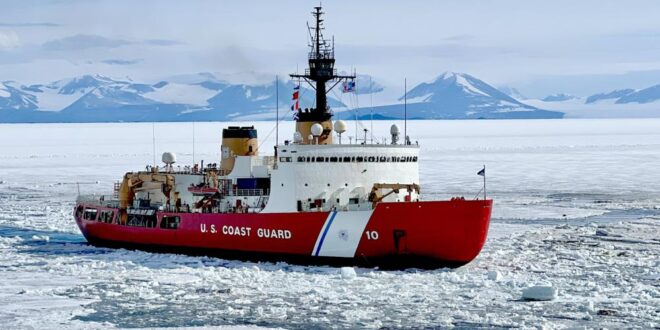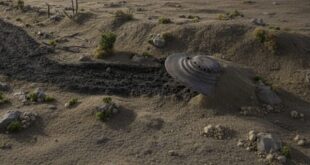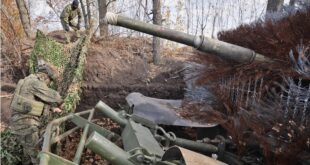MCMURDO STATION, Antarctica — The cracking and breaking of ice on a metal hull can be heard from land as the heavy icebreaker U.S. Coast Guard Cutter Polar Star (WAGB 10) enters the harbor of McMurdo Station, Antarctica to move the ice pier out of the way for an incoming modular causeway system.
Homeported in Seattle, Washington, USCGC Polar Star is the United States’ only heavy icebreaker. Every year, Polar Star travels to McMurdo Station, Antarctica, to provide support for Operation Deep Freeze (ODF).
McMurdo Station is the largest Antarctic station, and is built on bare volcanic rock, on the southmost solid ground that is accessible by ship. Established in 1955, it is the logistics hub of the U.S. Antarctic Program. Recorded temperature extremes at the remote facility have been as low as minus 50 degrees Centigrade. Hence the need for resupply – and the Polar Star.
“The primary purpose of Polar Star’s deployment is to break a channel through the miles of fast ice to provide access” for ships to deliver resupply to McMurdo Station and other outlying camps and stations, according to Cmdr. Samuel Blase, U.S. Coast Guard Liaison Officer, Joint Task Force-Support Forces Antarctica.
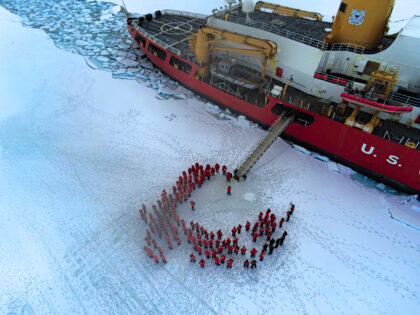
In 49 years of Service to the nation, Polar Star has made calls in more than 60 ports across six continents, circumnavigated North America, South America, and Antarctica. Polar Star remains the world’s most powerful non-nuclear icebreaker, and is the United States’ only heavy icebreaker.
Early this year, the ship held ice liberty, where many crew members played sports like football or soccer on the ice.
Crew members described an earlier mission, when the Polar Star eased into port.
The ship approached and guided the ice pier with cautious ease.
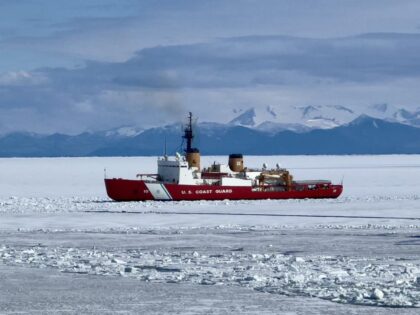
“The biggest challenge we faced during the ice pier move was all the loose ice in Winter Quarters Bay,” said Boatswain’s Mate 1st Class Joel Behr. As Coxswain, Behr was in overall command of the team and the Landing Craft Vehicle/Personnel (LCVP) boat.
“We either had to maneuver the LCVP around ice or several times we had to nose up to the ice and push it out of our way,” Behr said. “This was challenging because it’s abnormal operations for our boats to push ice. The good thing about the LCVP is it has a beaching plate on the keel, which gave the boat better safety for riding up on the ice when we pushed against it to move it out of the way.”
With three aviation-grade gas turbine engines, Polar Star provides the three controllable-pitch propellers with up to a total of 75,000 horsepower, making her the most powerful ship in the U.S. Coast Guard with the ability to break ice up to 21 feet thick.
Moving the ice pier was no problem, but chunks of the pier broke off and were moved around in the bay, so that the LCVP had to navigate around them.
The winds were also a key factor when managing maneuverability.
“Most of the weight of the boat is towards the stern leaving the bow very light, so when the wind catches the bow just right it’ll want to swing us around,” Behr said. “So having to counteract that along with dodging ice made for some sporty driving.”
“Participating in ODF is easily one of the cooler things I’ve done in the Coast Guard. Between the amount of travel we do and going to foreign countries, various seagoing traditions and ceremonies we do while at sea,” said Behr. “Coming to Antarctica and doing my job in such a remote, unforgiving, but pristine environment makes the hard work in Dry Dock and Seattle worth it.”
Polar Star’s shell plating and associated internal support structure are fabricated from steel that has especially good low-temperature strength. The portion of the hull designed to break ice is 1.75 inches thick in the bow and stern sections. The curved bow allows Polar Star to ride up on the ice, using the ship’s 13,000-ton weight to break the ice, and is immensely useful during ODF.
The ship is among others that support ODF from November to March each year.
Reported by Senior Chief Mass Communication Specialist RJ Stratchko, with material from the National Science Foundation.
 Soldier of Fortune Magazine The Journal of Professional Adventurers
Soldier of Fortune Magazine The Journal of Professional Adventurers


